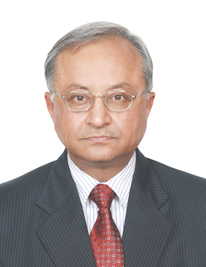South Korea’s President Moon Jae-in paid a highly significant visit to India on 8-11 July 2018 to cement his ‘New Southern Policy’ of increased focus on India and ASEAN countries. President Moon repeatedly said that his administration’s objective is to raise the Republic of Korea (ROK)-India relations to the level of ROK’s bilateral relations with its four giant neighbors – China, Japan, Russia and United States across the Pacific Ocean.
In various speeches, both President Moon and Prime Minister Narendra Modi referred to the widely believed legend in Korea about a princess from Ayodhya who came by ship to Korea in 48 CE, married King Kim Suro and took the name of Queen Suri Ratna. In fact, about nine percent of the Korean population with the family name ‘Kim’ traces their ancestry back to Queen Suri Ratna. Hence, one of the MoUs signed during the visit was for both the countries to jointly develop a memorial to Queen Suri Ratna in the Ayodhya city of Uttar Pradesh.
By visiting India quite early in his tenure and in the midst of his preoccupation with North Korea, President Moon Jae-in has signaled the importance he attaches to deepening India-South Korea relations. In fact, immediately after taking over as President, India was one of the few countries where President Moon had sent a special envoy.
The visit had significant outcome both on bilateral and regional issues. 11 MoUs were signed including one on the upgradation of the Comprehensive Economic Partnership Agreement which was signed in 2009 and became operational on 1 January 2010. The two sides agreed on an early harvest package mostly around marine products. A special economic zone will be created on the East Coast for Korean companies to process and market India’s valued marine products like shrimps and mollusks. A MoU was also signed on ‘Trade Remedies’, which would address the concerns of the two sides regarding anti-dumping, subsidies, non-tariff barriers etc. The two leaders set a target of US$50 billion of bilateral trade by 2030, from the present level of approx. $20 billion.
At the conclusion of their comprehensive talks, the two leaders issued a joint statement of ‘A vision for People, Prosperity, Peace and our Future’. In this statement, India designated ROK as an ‘indispensable partner’ in India’s Act East Policy. ROK declared India to be a ‘Central Pillar’ in its New Southern Policy. The two leaders agreed to add new substance and impetus to bilateral cooperation.
Significantly, it was agreed that the two countries will take up a joint capacity building program in Afghanistan. The two sides also agreed to enhance military exchanges, training and experience sharing. The two leaders rightly directed their defense industries to intensify cooperation. The delay in the conclusion of an agreement with South Korea’s Kangnam Corporation for purchase of eight minesweepers by India has been disappointing. Korean defense industry is reluctant to transfer technology and become India’s partner in its efforts for ‘Make in India’. ROK’s government needs to give the right guidance to its defense industry to take a long-term view and capture a share of India’s large defense equipment market by agreeing to joint R&D and co-production.
Looking at the regional issues of common concern, the two leaders emphasised the importance of the freedom of navigation, overflight and un-impeded commerce. The centrality of sovereignty and territorial integrity in international affairs was also noted. The two sides declared their commitment to combat terrorism through coordinated global and international efforts.
ROK declared its support to India’s membership to the Nuclear Suppliers’ Group. This was expected as India and ROK have a civil nuclear cooperation agreement and Korean companies covet the Indian nuclear energy market. However, the Joint Statement is silent on the long pending reforms of the UN Security Council (UNSC) and India’s keen interest to become a permanent member of UNSC, whenever it is expanded. It may be noted that South Korea is a member of the so-called ‘Coffee Club’ which seeks expansion only in the non-permanent members of the UNSC.
The core of India’s ‘Special Strategic Partnership’ with South Korea continues to be economic. President Moon declared his intention to expand economic co-operation with India. The two countries have established an India-Korea Future Strategy Group which would focus on collaboration for the new areas of technology under the 4th Industrial Revolution. This would include robotics, Artificial Intelligence, internet of things, big data, 3D printing etc. The highlight of the visit was the joint inauguration by the two leaders of a new facility of Samsung Electronics in NOIDA to produce about one crore mobile handsets per month. The fresh investment till 2020 will be of the order of Rs. 4000 crores.
The winds of change in the Korean peninsula were discussed and Prime Minister Modi had fulsome praise for President Moon’s personal leadership in this process. In this context Prime Minister Modi pointed out India’s continued concern that North Korea should not have ‘proliferation links’ in our neighborhood.
A large business delegation with CEOs of top Korean companies accompanied the Korean President. After the first wave of Korean investment in the 1990s, the ground in now fertile for the second wave of Korean investment. This visit of the Korean President will give a boost to that process.
India’s soft power was every evident when President Moon shared about his daughter being a yoga instructor. President’s wife Madam Kim Jung-sook had a meeting with the Phogat family of ‘Dangal’ fame. President Moon started his visit with a tour of Swaminarayan Temple and highly appreciated ancient Indian culture and civilization.
The visit of the South Korean President is another important milestone in the growing relations between the two large economies of Asia and signal that the bilateral relations have reached a stage of deep maturity, wide understanding with a shared vision for the future.
Image Source: https://previews.123rf.com/images/argus456/argus4561606/argus456160618463/58131901-south-korea-flag-with-india-flag-3d-rendering.jpg











Post new comment